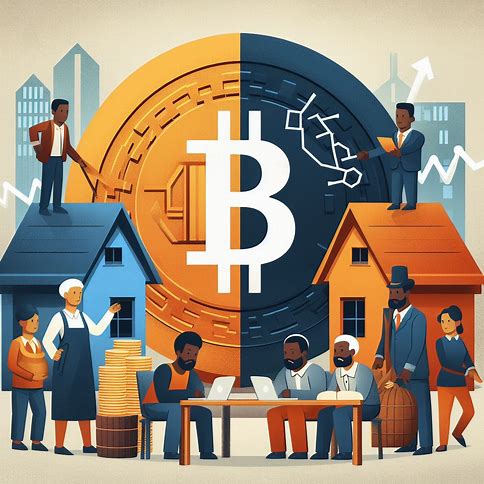The development of digital collectibles like the recent emergence of Bitcoin Ordinals has sparked comparisons to the well-established Ethereum NFT ecosystem. In this article, we’ll take a closer look at both Bitcoin Ordinals and Ethereum NFTs, examining their key features, advantages, limitations, and potential future implications for creators, collectors, and the broader blockchain industry.
Understanding Bitcoin Ordinals and Ethereum NFTs
Let’s first establish a baseline understanding of each.
Bitcoin Ordinals
Bitcoin Ordinals was proposed by Bitcoin Core contributor Casey Rodarmor in January 2023. It allows the association of arbitrary data (like images, videos, or HTML) to individual satoshis (the smallest unit of Bitcoin). This is achieved by numbering each satoshi minted after the activation of the Ordinals protocol and assigning them unique serial numbers called “ordinals.” These ordinals can then be inscribed with digital artifacts, creating truly one-of-a-kind Bitcoin-native digital collectibles.
Ethereum NFTs
Non-Fungible Tokens (NFTs) on Ethereum are unique digital assets that represent ownership of a specific item, such as digital art, music, videos, or even virtual real estate. They are minted using Ethereum smart contracts, most commonly using the ERC-721 or ERC-1155 token standards. Each NFT has its own unique identifying code and metadata that distinguishes it from any other NFT. Ethereum’s programmable and flexible nature has made it the go-to platform for the burgeoning NFT market.
Key Differences
Bitcoin Ordinals
Ordinals are inscribed directly onto satoshis, taking advantage of the security and immutability of the Bitcoin blockchain itself. This means that the digital artifact is permanently tied to a specific satoshi and can be tracked and verified on the blockchain. However, Bitcoin’s limited scripting language means that Ordinals lack the programmability and interactivity of Ethereum NFTs.
Ethereum NFTs:
Ethereum NFTs, on the other hand, are minted using smart contracts. These self-executing contracts allow for a wide range of programmability, enabling features like royalty splits, breeding mechanics, and interactive experiences. The downside is that NFTs are not directly inscribed onto the blockchain but are instead represented by a smart contract, which some argue is a layer of abstraction away from true digital ownership.
Read also: Bitcoin Nodes And Miners: Key Differences Explained
Ecosystem and Adoption
When it comes to ecosystem development and overall adoption, Ethereum has a clear advantage over Bitcoin Ordinals:
Ethereum NFTs
Ethereum has been the backbone of the NFT market since its inception, with marketplaces like OpenSea, Rarible, and Nifty Gateway driving billions in sales. The ERC-721 and ERC-1155 token standards have been widely adopted, and the majority of high-profile NFT projects, from CryptoPunks to Bored Ape Yacht Club, call Ethereum home. This network effect has attracted a vibrant community of creators, collectors, and developers, solidifying Ethereum’s position as the leading NFT platform.
Bitcoin Ordinals
Bitcoin Ordinals, being a more recent development, have a smaller ecosystem and user base compared to Ethereum NFTs. However, the Ordinals community is growing rapidly, with new marketplaces, wallets, and tools emerging to support the creation and trading of inscribed satoshis. Projects like Taproot Wizards and Ordinal Punks are gaining traction, but it will take time for Bitcoin Ordinals to catch up to Ethereum in terms of overall adoption and market maturity.
Scarcity and Collectibility
Bitcoin Ordinals
With Bitcoin Ordinals, scarcity is enforced at the satoshi level. Each inscribed satoshi is tied to a specific satoshi serial number creating a strong sense of rarity and collectibility, as there will only ever be 2.1 quadrillion sats in existence. Additionally, inscriptions on older satoshis (those minted closer to Bitcoin’s genesis block) may command higher value due to their perceived historical significance.
Ethereum NFTs
Ethereum NFTs also derive value from scarcity, but this is enforced at the smart contract level. NFT creators can specify the total supply of tokens and even introduce additional scarcity mechanics, such as “burning” (destroying) NFTs to reduce supply. However, the perceived value of an Ethereum NFT is more closely tied to the reputation and community around the specific project rather than the underlying blockchain.
Coexistence or Competition?
Coexistence:
One possibility is that Bitcoin Ordinals and Ethereum NFTs will coexist, catering to different audiences and use cases. Bitcoin Ordinals may appeal more to Bitcoin purists and those who value the simplicity and security of inscriptions, while Ethereum NFTs will continue to attract creators and collectors who prioritize programmability and interactivity. In this scenario, both ecosystems can thrive independently, enriching the overall landscape of digital collectibles.
Competition:
Alternatively, Bitcoin Ordinals could emerge as a serious competitor to Ethereum NFTs. As the Ordinals ecosystem matures and more user-friendly tools and marketplaces emerge, some creators and collectors may migrate from Ethereum to Bitcoin in pursuit of lower fees, increased security, or the prestige of having their work inscribed on the world’s oldest and most valuable blockchain. This increased competition could drive innovation in both ecosystems, ultimately benefiting end-users.
Key Takeaways
1. Bitcoin Ordinals and Ethereum NFTs are two distinct approaches to creating and managing unique digital assets on their respective blockchains.
2. Bitcoin Ordinals inscribe digital artifacts directly onto satoshis, ensuring scarcity and immutability, while Ethereum NFTs rely on smart contracts for minting and programmability.
3. Ethereum has a significant head start in terms of ecosystem development, adoption, and market maturity, with a wide range of marketplaces, tools, and successful projects.
4. Bitcoin Ordinals are gaining traction, with a growing community and emerging infrastructure, but still have a ways to go to catch up to Ethereum’s NFT ecosystem.
5. Both Bitcoin Ordinals and Ethereum NFTs derive value from digital scarcity and uniqueness, though Bitcoin Ordinals emphasize satoshi-level scarcity, while Ethereum NFTs focus on project-specific rarity.
6. The future of Bitcoin Ordinals and Ethereum NFTs could involve coexistence, with each serving different audiences and use cases, or competition, with creators and collectors migrating based on factors like fees, security, and prestige.
7. Staying informed about developments in both the Bitcoin Ordinals and Ethereum NFT ecosystems is crucial for creators, collectors, and investors looking to make informed decisions and capitalize on new opportunities.
Frequently Asked Questions
1. What are Bitcoin Ordinals?
Bitcoin Ordinals are a new way to create unique digital assets by inscribing data like images, videos, or HTML directly onto individual satoshis (the smallest unit of Bitcoin). Each inscribed satoshi is assigned a unique serial number, making it a one-of-a-kind digital collectible.
2. How do Ethereum NFTs differ from Bitcoin Ordinals?
Ethereum NFTs are minted using smart contracts, which allows for greater programmability and interactivity compared to Bitcoin Ordinals. However, NFTs are not directly inscribed onto the Ethereum blockchain but are instead represented by a smart contract.
3. Which has a more developed ecosystem – Bitcoin Ordinals or Ethereum NFTs?
Ethereum NFTs currently have a more mature and expansive ecosystem, with numerous established marketplaces, diverse projects, and a large user base. Bitcoin Ordinals, being a newer development, are still building out their infrastructure and community.
4. Can Bitcoin Ordinals and Ethereum NFTs coexist, or will they compete with each other?
It’s possible that Bitcoin Ordinals and Ethereum NFTs could coexist, each serving different audiences and use cases. However, as the Bitcoin Ordinals ecosystem grows, it may also compete with Ethereum NFTs for market share and user adoption.
5. What factors should creators and collectors consider when choosing between Bitcoin Ordinals and Ethereum NFTs?
Creators and collectors should consider factors such as the level of security and immutability offered by each blockchain, the fees associated with minting and trading, the programmability and interactivity of the digital assets, and the overall prestige and community support behind each ecosystem.
6. How can I stay informed about developments in the Bitcoin Ordinals and Ethereum NFT spaces?
To stay up-to-date on Bitcoin Ordinals and Ethereum NFTs, follow reputable news sources, join community forums and social media groups, and engage with projects and creators in each ecosystem. Attending industry events and conferences can also provide valuable insights and networking opportunities.










